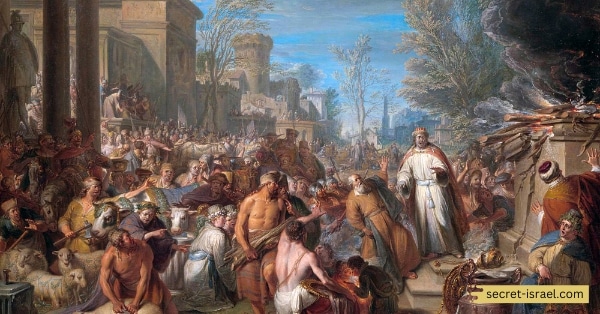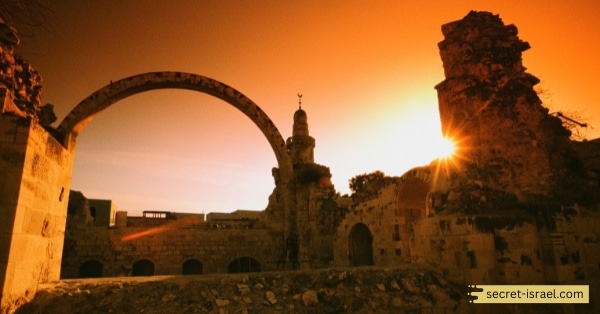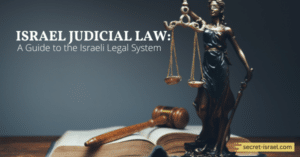In ancient times, Israel was divided into the Northern and Southern Kingdoms, leaving a lasting impact on politics and religion. Explores the history of the split Kingdom of Israel, its key figures, cultural and religious differences, and the effects that still shape the Middle East today. Understanding the past helps us navigate the present and future.
Join us as we uncover the complex story of one of the most significant events in the region’s history – The Split Kingdom.
The Unified Kingdom of Israel
The Unified Kingdom of Israel, also referred to as the United Monarchy, was a significant period in ancient Israelite history. This period, spanning from approximately 1050 to 930 BC, marked the reigns of three prominent kings: Saul, David, and Solomon.
Saul, the first king, was chosen by divine ordination, yet his disobedience led to his downfall.
David, his successor, is celebrated for his military victories and establishment of Jerusalem as the capital. His reign brought prosperity and expansion, solidifying the kingdom’s power.
Solomon, David’s son, further enhanced the kingdom’s glory with his wisdom and the construction of the First Temple in Jerusalem, a symbol of unity and religious centrality.
However, Solomon’s later years were marked by controversy and idolatry, leading to social unrest. This discontentment eventually resulted in the division of the kingdom after his death, splitting it into the Northern and Southern Kingdoms.

Key Figures in the Division: Rehoboam and Jeroboam
Rehoboam and Jeroboam were instrumental figures in the division of the Unified Kingdom of Israel.
Rehoboam, son of Solomon, ascended to the throne upon his father’s death. However, his harsh and oppressive policies, especially his decision to continue his father’s heavy taxation, sparked widespread discontent among the Israelites.
Jeroboam, an official in Solomon’s court who had previously fled to Egypt due to a rebellion, returned and led a revolt against Rehoboam. Jeroboam successfully rallied the northern tribes of Israel around him, leveraging their shared resentment towards Rehoboam’s rule.
The division was solidified when God reportedly told Jeroboam that he would become king of the ten northern tribes, thus establishing the Northern Kingdom, also known as Israel. Meanwhile, Rehoboam retained control over the Southern Kingdom, known as Judah.
These events marked a significant turning point in Israelite history, leading to the existence of two distinct kingdoms.

The Northern Kingdom: Israel’s Rise and Fall
The Northern Kingdom, also known as Israel, was established around 930 BC when the ten northern tribes broke away from the rule of Rehoboam, Solomon’s son. Under the leadership of Jeroboam, the new kingdom quickly grew in strength and prosperity. It was larger and wealthier than its southern counterpart, Judah, boasting fertile lands and control over key trade routes.
However, the Northern Kingdom was politically unstable with frequent changes in leadership through violent coups. Its religious practices also deviated from those of the southern kingdom, with the introduction of golden calf worship at Bethel and Dan, which was condemned by many biblical prophets.
Despite periods of prosperity, the Northern Kingdom ultimately fell to the Assyrian Empire in 722 BC. The Assyrians deported many Israelites, replacing them with people from other conquered lands. This event, known as the Assyrian captivity or exile, marked the end of the Northern Kingdom of Israel.

The Southern Kingdom: Judah’s Struggle for Identity
The Southern Kingdom, known as Judah, was smaller and less prosperous than the Northern Kingdom of Israel, but it managed to maintain a more stable political and religious environment. After the division, Rehoboam, son of Solomon, ruled Judah, which consisted of the tribes of Judah and Benjamin. Jerusalem, with the Temple built by Solomon, remained its capital and religious center.
Judah faced numerous challenges throughout its existence. It struggled for identity and survival amidst powerful neighbors like Egypt and Assyria, and suffered from periodic invasions and political instability. However, it was through these struggles that Judah forged a distinct religious and national identity, maintaining a consistent lineage of Davidic kings and keeping alive the worship of Yahweh in the Jerusalem Temple.
Despite its resilience, Judah eventually fell to the Babylonians in 586 BC, leading to the exile of its inhabitants and the destruction of the First Temple. This marked a significant point in Jewish history, shaping the faith and identity of the Jewish people.

Cultural and Religious Differences Between the Two Kingdoms
The division of the unified Kingdom of Israel into the Northern and Southern Kingdoms brought about distinct cultural and religious differences between the two regions. These differences were shaped by their geographical location, political leadership, international relations, and religious practices.
| Differences | Northern Kingdom (Israel) | Southern Kingdom (Judah) |
|---|---|---|
| Capital and Religious Centers | Established new religious centers at Bethel and Dan | Retained Jerusalem as its religious and political center |
| Religious Practices | Introduced the worship of golden calves | Maintained the worship of Yahweh in the Jerusalem Temple |
| Political Stability | Experienced frequent changes in leadership due to violent coups | Had a stable line of Davidic kings |
| International Relations | Often interacted with foreign powers, influencing its culture | Was more isolated, maintaining a more homogeneous culture |
| Literary Traditions | Contribution is less clear, but may have contributed to early prophetic literature | Credited with producing much of the Hebrew Bible |
| Survival After Conquest | Identity largely lost after the Assyrian conquest (‘Ten Lost Tribes of Israel’) | Managed to retain its identity during the Babylonian exile |
The Lasting Effects of Israel’s Division
The division of Israel into the Northern and Southern Kingdoms had enduring effects on Jewish history and culture. The separate kingdoms developed distinct religious practices, fostering diversity within Judaism.
The fall of both kingdoms resulted in exiles that influenced Jewish identity and theology. The Southern Kingdom’s survival and its production of the Hebrew Bible helped to preserve Jewish traditions.
Meanwhile, the loss of the Northern Kingdom’s ten tribes became a significant part of Jewish lore, contributing to the concept of the ‘Lost Tribes of Israel’. Ultimately, the division shaped the course of Jewish history, faith, and cultural identity.

In conclusion
The division of Israel into the northern and southern kingdoms remains a significant event in the history of the ancient Near East. It marked a turning point in the religious, political, and social landscape of the Israelites.
The lasting legacy of this split kingdom highlights the complexities of this era, where power struggles and ideological differences such as the difference between idolatry and monotheism were commonplace.
While much remains unknown about the precise events leading up to the division, scholars continue to study this period and uncover new insights. Nonetheless, the split kingdom serves as a potent reminder that change is a constant in the story of humanity, and that understanding our past lays the foundation for a better future.












